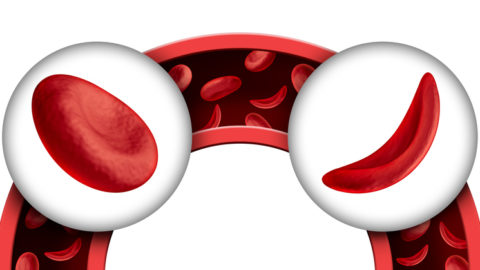Sickle cell disease in newborns and children: What families should know and do – Harvard Health Blog
[ad_1]

If you’ve learned that your newborn or young child has sickle cell disease, you — and other family members and friends — may have many questions.
These days, most cases of sickle cell disease in the US are diagnosed through newborn screening. It’s important to make the diagnosis early, so that babies can be started on penicillin (or another antibiotic) to prevent infection. Getting connected early to a pediatrician for primary care — and to specialists in blood disorders who can work closely with the child as they grow, and with their families — can help prevent complications of the disease.
The basics
Hemoglobin is the part of the red blood cell that carries oxygen. In sickle cell disease, the hemoglobin can change the rounded shape of red blood cells into a C-shape that is crooked, like the tool called a sickle. When that happens, the cells get sticky and can clog up small blood vessels. It also makes the red cells more fragile and likely to break apart, causing anemia.
Millions of people around the world have sickle cell disease, or SCD. In the US, the Centers for Disease Control and Prevention (CDC) estimate it affects about 100,000 people. It occurs in about one out of 365 Black or African American births, and one out of 16,300 Hispanic American births.
Is SCD a genetic disease?
Yes. All of us have two genes that decide what kind of hemoglobin we have, one from each parent. People with sickle cell disease have two copies of the sickle gene, inherited from both parents. If someone has one copy, they have “sickle cell trait,” meaning that they are a carrier of the gene.
Sickle cell trait is common, affecting one in 13 Black children. While there are some problems associated with sickle cell trait, people with sickle cell trait are generally healthy; in fact, they are thought to be less likely to develop severe cases of malaria, which is why the disease was thought to have evolved in people from areas around the equator where malaria is common.
There are other kinds of genetic hemoglobin diseases, such as thalassemia or hemoglobin C. Sometimes people are born with one sickle gene and one gene for a different hemoglobin problem. The severity of their condition depends on the particular hemoglobin combination.
Currently, there is no cure for sickle cell disease or the other genetic hemoglobin diseases, except for bone marrow transplant or stem cell transplant.
What health issues could SCD cause?
When sickle cells clog up blood vessels, it can lead to pain and damage to organs or tissues due to lack of blood flow. When coupled with the effects of anemia, this means that babies and children with sickle cell disease are more likely to have complications from infections, such as pneumonia; vision problems; blood clots; and breathing problems. Children with sickle cell disease can also get swelling of the spleen if sickled cells get stuck there.
How can you help your child live a healthy life as they grow?
Children with sickle cell disease and their families can work together to help prevent complications by taking these steps:
- Stay well-hydrated, as dehydration can make cells more likely to sickle.
- Avoid extremes of temperature, especially cold, as this also can trigger sickling of the cells.
- Avoid areas of high altitude, where there is less oxygen.
- Take care with very vigorous exercise, which may decrease the amount of oxygen available to the blood.
- Wash hands regularly and avoid sick people to the extent possible.
- Get all recommended vaccinations.
- Learn all the signs and symptoms of blocked blood vessels, anemia, a swollen spleen, infection, blood clots, and lung problems, so that they know when to get medical care immediately. Ask your child’s doctor or medical team to help you understand key warning signs for each of these based on your child’s age.
Also, see this helpful toolkit created by the CDC and the American Society of Hematology. It explains common complications of sickle cell disease and steps to take for better health.
Being closely connected to medical care is crucial, because the sooner complications are diagnosed, the sooner and more successfully they are treated. There are also treatments such as hydroxyurea that can help prevent complications in the first place. Children with sickle cell disease should regularly see their primary care pediatrician and their specialist, whether they are having symptoms or not, so that they can work together to help live the healthiest life possible.
Follow me on Twitter @drClaire
[ad_2]
Source link



